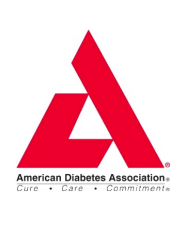The 2009 ADA Clinical Practice Revisions

At the top of our diaTribe reading list is the ADA’s Revisions for the 2009 Clinical Practice Recommendations – suffice it to say, we have a pretty unorthodox list.
The Standards of Medical Care in Diabetes – 2009 is a statement by the ADA that runs the gamut from diabetes diagnosis to prevention to employment issues, explaining the prevailing scientific opinion on each topic. The bullets below list our “takeaways” from this year’s revision to the guidelines. Hopefully, this article will give you some new questions to ask your healthcare team.
Throughout, we have included the ADA’s estimate of the scientific ‘level of support’ for each recommendation (from A, for very well supported recommendations, to E).
If you have prediabetes or diabetes:
-
A very important change calls for an ongoing support program for weight loss of 5-10% body weight, and increasing moderate physical activity to at least 150 minutes every week (~20 minutes of walking every day). This is a level A recommendation for those with impaired glucose tolerance.
-
Bariatric surgery was also officially added to the guidelines as a tool for weight loss for those who qualify. The new guidelines recommend bariatric surgery (level B) and accompanying lifestyle support (level E) in type 2’s with a body mass index (BMI) greater than 35.
If you have diabetes:
-
To reduce your risk of heart disease and stroke, the goal is still to get your A1c below 7% (level B). This recommendation was based on long-term follow-up of the DCCT, a landmark clinical trial, and the UKPDS study participants, and is particularly relevant for newly diagnosed patients. The partial results of the ACCORD study prevented the general recommendation of more stringent goals for reduction of macrovascular risk. We believe, in light of the available evidence, that this is a very balanced and well considered recommendation. See this issue’s Conference Pearls for more information about these studies.
-
The relationship between A1c measurements and average glucose has been updated to help you estimate your A1c more accurately. The table below, adapted from the guidelines, gives you a better idea of what your A1c means in terms of glucose values with which you may be more familiar. For example, to get an A1c of lower than 7%, you are going to have to keep blood glucose lower than 154 mg/dL on average.
A calculator for converting A1C results into estimated average glucose (eAG) in either mg/dL or mmol/L, is available here. The formula used in the conversion to mg/dL is (28.7 X A1C – 46.7 = eAG).
-
If you have or have had cardiovascular disease, talk to your doctor about whether you should be taking a statin (A), aspirin (A), and/or an ACE inhibitor (C) to reduce the risk of future cardiovascular events such as heart attacks and stroke.
If you are interested in continuous glucose monitoring:
-
The new recommendations state that CGM use is valuable in patients on intensive insulin regimens over the age of 25 years - level A recommendation. This is a great piece of information to share with your healthcare team if you have been discussing CGM (or even if you have just been thinking about it). We’re excited about these new guidelines because they suggest that doctors are starting to consider CGM use for type 2 patients as well as type 1’s. We’re definitely seeing a trend toward more CGM use, and many insurance companies (including Aetna and United!) are now offering expanded CGM coverage policies.
If you have a child with diabetes:
-
The new recommendations on eye exams for retinopathy now additionally specify that type 1 children 10 years and older should have an initial dilated and comprehensive eye examination within five years of onset of diabetes. It is important to maintain these scheduled exams to prevent vision loss in the future (level B).
-
If you have a child with diabetes who is in school, talk to the administration to ensure the nurse is knowledgeable about diabetes and find out if other school staff who may be responsible for your child, can receive some basic training - especially for emergencies like hypoglycemia and hyperglycemia. The guidelines on this issue have been modified to emphasize the input from the parent/guardian of the child in creating an individualized diabetes medical management plan (DMMP) – level E.
If you have a child who was born with a low birth weight:
-
Ask your doctor how you can lower the chances of your child developing type 2 diabetes. Low birth weight has been identified as a risk factor for diabetes, because small babies often gain weight very quickly after birth and this might help set them up for diabetes in later life. The revised recommendations add “small for gestational-age birth weight” to the list of conditions that parents and healthcare providers should look out for when testing for type 2 diabetes in children.
We look forward to bringing you the next update to the Clinical Practice guidelines in a year. View the full document of guidelines. Non-subscribers to Diabetes Care will have to pay for access to the full article.

.JPG)






